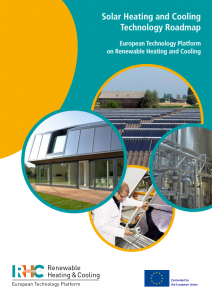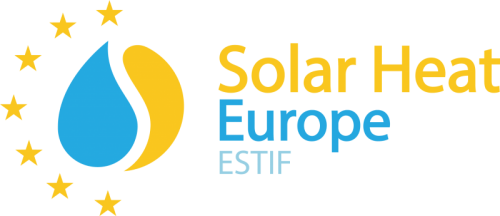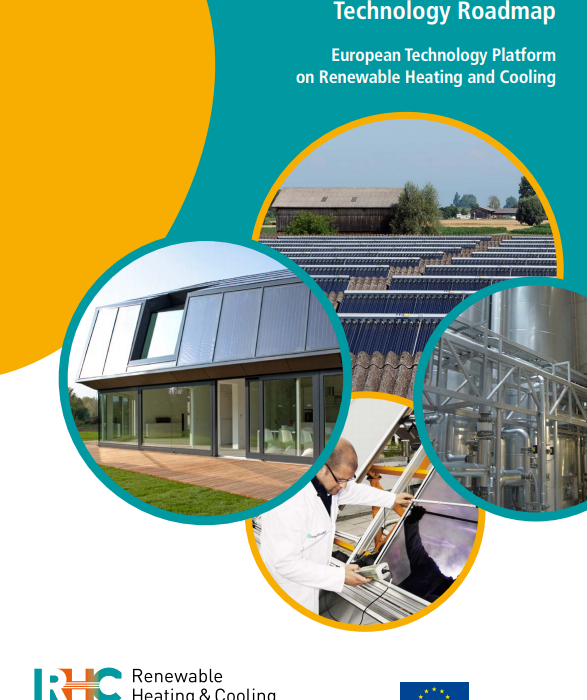 The solar thermal energy sector is at a critical juncture. While solar thermal energy is showing the highest potential among renewable heating and cooling technologies, its share of heating and cooling is still far below 1%. This is against a background of declining or stagnating European solar thermal markets that have ceased growing since 2008. Furthermore, competition from other sources is growing, like electricity being used for heating purposes. Therefore, what will be the future of solar thermal in the European heating and cooling system is an important question.
The solar thermal energy sector is at a critical juncture. While solar thermal energy is showing the highest potential among renewable heating and cooling technologies, its share of heating and cooling is still far below 1%. This is against a background of declining or stagnating European solar thermal markets that have ceased growing since 2008. Furthermore, competition from other sources is growing, like electricity being used for heating purposes. Therefore, what will be the future of solar thermal in the European heating and cooling system is an important question.
The solar thermal panel of the RHC-Platform analysed the situation and reached the conclusion that solar thermal energy still offers great potential and has a very realistic opportunity to become a key player in Europe’s heating and cooling sector. This is because a significant share of solar thermal energy is needed to develop a secure and sustainable heating and cooling system in Europe, due to the limitations of alternative sources. However, strong technological improvements are definitely prerequisites for the solar thermal sector to make such contribution.
This huge technological potential has already been highlighted in the Strategic Research Priorities developed by the solar thermal technology panel and now implementation is needed within the framework of the Horizon 2020
programme. Therefore, research and innovation (R&I) must be accelerated to achieve significant improvements regarding the sector’s key objectives, i.e. lower costs for heat production and wider range of applications. This implementation roadmap presents the key research and innovation actions up to 2020 to develop not only the technological, but also the market potential of the solar thermal energy. Three pathways are identified, which the sector must tackle in parallel: the development of solar compact hybrid systems (SCOHYS) to reduce the solar heat costs by 50% until 2020, technological improvements in Solar-Active-Houses (SAH) as an attractive option to fulfil the requirement of nearly zero-energy buildings and the development of systems supplying solar heat for industrial processes (SHIP) to crack this significant market.
The SCOHYS roadmap pathway is focusing on cost reduction by improving efficiency and lowering the price of components, especially by integrating the solar with the auxiliary heating system, with simpler system design and
easier collector installations. R&I is necessary on collectors, storage, hydraulic system, controller and collector mounting in an integrated way for single and multifamily homes. Technological R&I should be accompanied by the development and implementation of standards and quality assurance concepts. It must also include significant progress in socio-economic framework conditions like new business models, support programmes and regulations. To halve the costs of solar heat by 2020 means becoming cost competitive with heat generated by fossil fuels (“fossil fuel parity”) in most applications for domestic hot water heating and space heating in Europe. The necessary R&I budget is estimated at 65 Mio € until 2020, which has to be spent by both public and private sectors.
The SAH roadmap pathway is focusing on increasing the share of solar thermal energy for the domestic hot water and space heating demand per building, from about 25% to about 60%, without increasing the solar heat costs. R&I is vital to improve collector arrays, the integration of large storage volumes in the building, hydraulic schemes and control strategies. The system design can be further optimized to increase efficiency, reduce collector surface and storage volume, and, therefore, costs. The first action is to optimize the SAH concept for newly built single family homes, followed by actions to extend the SAH concept to multifamily homes and to the refurbishment of buildings. The technological R&I actions include: basic research on components and system design, prototype development and demonstration, and it should be accompanied by non-technological measures. The total R&I budget is estimated at 74 Mio € until 2020.
The SHIP roadmap pathway is focusing on the standardized and cost optimal solutions to integrate solar thermal technology in all industrial processes, by developing collector structures adapted to industrial buildings, improved large-scale solar collector arrays, and new planning and design tools. A second action is focusing on the development of the next generation of medium temperature collectors for temperatures between 100°C and 250°C. Beside the development of appropriate solutions, the main target of the R&I actions is the significant reduction of solar heat costs to 3-6 €ct/kWh for low and 4-7 €ct/kWh for medium temperature applications. Since the SHIP actions include a large demonstration programme of 700 SHIP systems, the budget is estimated at 450 Mio €.
By implementing this roadmap, the solar thermal sector will be able to play a crucial part in a sustainable energy system as foreseen by the European Union. With reduced solar heat costs as a result of the roadmap implementation, the solar thermal technology will become cost competitive and attractive for customers; therefore contributing to the European goals towards reducing greenhouse gas emissions, stabilizing energy prices and reducing dependency on energy imports. Hence, the sector is calling for a significant increase in R&I support within the framework of Horizon2020.

